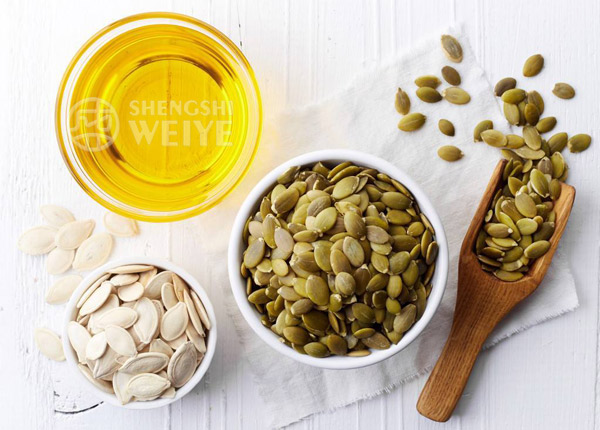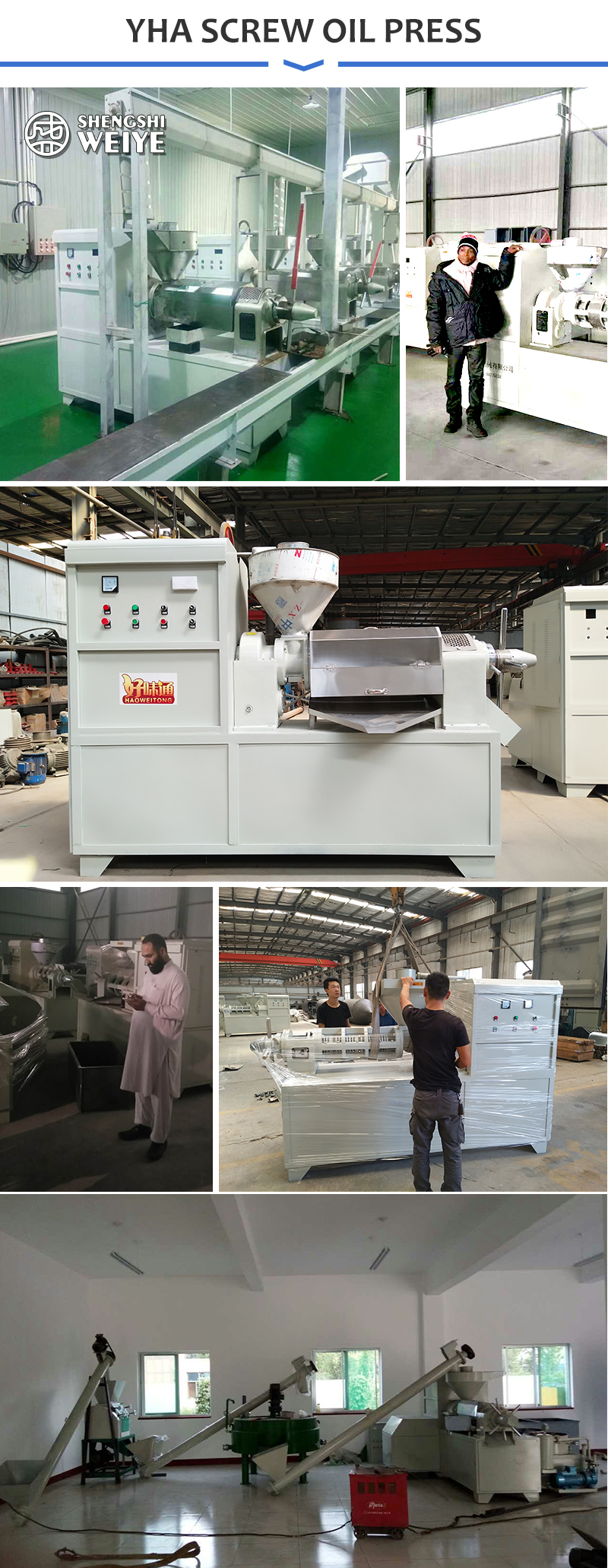Pumpkin (scientific name: Cucurbita moschata (Duch. Ex Lam.) Duch. Ex poiret) is a kind of annual vine herb of Cucurbitaceae. It originated from Mexico to Central America and is widely cultivated all over the world. Introduced into China in the Ming Dynasty, it is now widely planted in the north and south.
Pumpkin seed, the name of traditional Chinese medicine. Cucurbita moschata Duch. Harvest mature fruits in autumn, take out seeds, wash and dry.
The dry and mature seeds are oblate, slightly pointed at one end, yellowish white in appearance, slightly ribbed at the edge, about 1.2-2 cm long and 0.7-1.2 cm wide, with hairy surface and many edges. The testa is thick and the hilum is at one end of the tip; After removing the seed coat, the green thin endosperm and two yellow thick cotyledons could be seen. The cotyledons contain fatty oil and the radicle is small. It is fragrant and slightly sweet. It is better to be dry, plump and yellowish white.
Pumpkin seed oil is also called white seed oil, pumpkin seed oil. The extraction methods of pumpkin seed oil include cold pressing, hot pressing and solvent extraction. The extracted pumpkin seed oil must be refined (6-de-processing) before it can be eaten. The refining process will inevitably destroy the natural components of pumpkin seed oil and reduce the nutrition of pumpkin seed oil.
Pumpkin seed oil mainly contains 10 kinds of fatty acids, and unsaturated fatty acids account for 90%. The content of oleic acid was as high as 63.0%, followed by linoleic acid 20.2%, linolenic acid 6.8%, palmitic acid 4.09%, stearic acid 1.78%, and eicosanoic acid 1.16%. The other four fatty acids were very low, accounting for about 1.05%. Studies have shown that unsaturated fatty acids have the effects of lowering blood lipid, antithrombotic and blood pressure, and their medicinal value has attracted more and more attention and application. Linoleic acid and linolenic acid are essential fatty acids for human body. They are essential for synthesis of phospholipids, formation of cell structure and maintenance of normal function of all tissues.
Pumpkin kernel contains 46.7% crude fat and 37.2% crude protein; Pumpkin seed oil has good quality, light yellow, no peculiar smell and pure oil flavor; The iodine value (I) of pumpkin seed oil is as high as 118 g / 100 g, the content of unsaponifiable matter is 9.02 g / kg, and unsaturated fatty acid accounts for 90%. The content of oleic acid, linoleic acid and linolenic acid is higher, which is suitable for the preparation of nutritional health oil; Pumpkin kernel is also rich in K, Mg, P, CA, Na, Zn, Fe, Mn, Cu and other mineral elements beneficial to human body.
The cold pressing method is to press under the condition that the temperature does not exceed 60 ℃, and the cold pressed oil body is yellow. The pumpkin seed oil processed by this method can well retain the natural ingredients, which is a widely respected processing method, and more retains the original flavor and nutritional value of the plant itself. At the same time, six processes are used to remove wax, degrease, degumming, deacidification, deodorization, decolorization and filter harmful substances in the oil.
The extraction process of pumpkin seed oil was as follows
Pumpkin seed → peeling → crushing → cold pressing → filtration → crude oil
Pumpkin seed oil refining process: crude oil → degumming → deacidification → decolorization → deodorization → dewaxing → product oil
The refining process of pumpkin seed oil is as follows:
Degumming process: it is a process to remove colloidal substances in oil. In the removed colloids, phospholipids, calcium, magnesium, iron and other impurities are the main components. In short, hydrated degumming is a method that uses the hydrophilic group contained in lipid molecules such as phospholipids to add a certain amount of hot water or dilute electrolyte solution to the oil to make colloidal water-soluble lipids swell and agglomerate, and then separate them from the oil by sedimentation or centrifugation.
Deacidification process: when the oil is not fully mature and the oil is not processed and stored properly, it can cause the decomposition of oil and produce free fatty acids, which can increase the acidity of oil and reduce the quality of oil. Acid value is often used to reflect the content of free fatty acids in oil. Alkali refining is a refining method that neutralizes free fatty acids in oil by adding alkali to form fatty acid salt (soap) and water. Soap absorbs some impurities and settles and separates from oil. The precipitate formed is called soap foot. Distillation deacidification is also known as physical refining. This deacidification method does not need alkali neutralization, but uses the difference of relative volatility between triglycerides and free fatty acids to carry out steam distillation under high temperature and high vacuum, so that free fatty acids and low molecular weight substances are discharged together with steam. This method is suitable for high acid value oils.
Decolorization process: the pigment of oil generally includes chlorophyll, carotenoid, flavonoid pigment and anthocyanin. Individual oilseed also contains some unique pigments, such as gossypol in cottonseed. The most widely used method in industrial production is adsorption decolorization. Adsorption decolorization is the process of adding some surfactant with strong adsorption capacity into oil, adsorbing pigment and other impurities in oil under certain process conditions, and removing adsorbent and impurities through filtration to achieve the purpose of oil decolorization and purification.
Deodorization process: vacuum steam deodorization is the most widely used and effective method at home and abroad. It makes use of the great difference between the volatilities of odor substances and triglycerides in oil, under the condition of high temperature and high vacuum, and with the help of the principle of steam distillation, the odor causing volatile substances in oil can escape together with water vapor in the deodorizer to achieve the purpose of deodorization.



